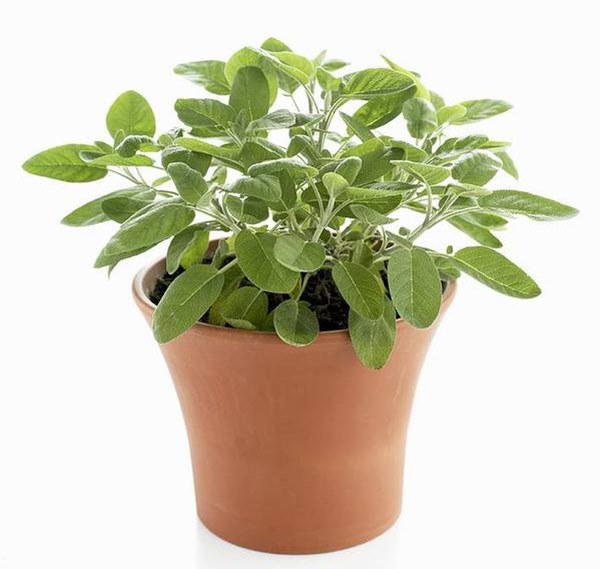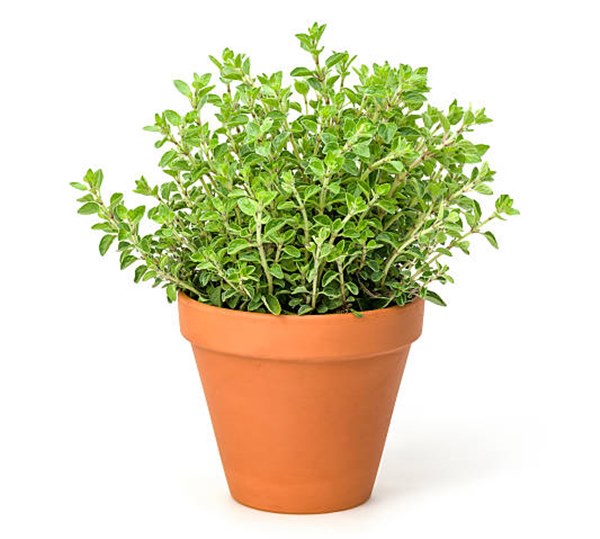Herbs that Grow in Pots | Best Herbs for Container
Growing herbs in containers ensure a fresh supply of herbs at hand. Here are the best picks for herbs that grow in pots.
Having a fresh supply of herbs at hand is every chef’s dream, as herbs are a staple in many cuisines. Growing herbs in the container will ensure that you have a fresh supply of herbs at hand all the time. Plus, a little greenery hurts no one. So without further ado, here are herbs that grow well in pots.
1. Rosemary

Botanical Name: Salvia rosmarinus
This highly aromatic herb acts as a mood enhancer, and that’s why no wonder it’s used in aromatherapy. There are trailing and upright varieties of rosemary, both of which grow well in containers. Use it for seasoning soups, salads and stews and also with chicken and fish
2. Basil

Botanical Name: Ocimum basilicum
Good air circulation, a warm sunny spot, and allowing the soil to turn dry between watering cycles are the cocktail for thriving Basil. It’s used liberally in pesto, tomato sauce and vinegar and has a balanced flavor between sweet and savory. There are over 60 basil varieties to choose from, among which sweet Basil is the most common basil cultivar.
3. Mint

Botanical Name: Mentha
When it comes to herbs, you can’t afford to leave the mint out of the list. This popular herb is widely used in gums, toothpaste, body & hair care and many other products. When chewed upon, the cool and minty flavor is left behind, which is the selling point. Choose a container that’s at least 8 inches in depth and width with drainage holes at the bottom.
4. Chives

Botanical Name: Allium schoenoprasum
Better served fresh in salads, soups, or garnish dishes, chives have many culinary uses. Blooming in spring, it attracts pollinators such as bees. Locate the container at porch, patio or kitchen windowsill for quick reach where it receives direct sun to bright indirect light.
5. Coriander

Botanical Name: Coriandrum sativum
Chinese parsley, dhania or cilantro are some other names for this common herb. The delicate young leaves are used liberally in Indian, Chinese and Latin American dishes. Apart from the foliage, the seeds are also used in flavoring dishes in both raw and ground form.
6. Parsley

Botanical Name: Petroselinum crispum
One shouldn’t confuse it with Chinese parsley as they both are different herbs. Parsley has a mild and grassy flavor compared to coriander which is strong and intense. It’s used both as a fresh culinary herb and dried spice. French curly-leaf and Italian flat-leaf are the most common parsley cultivars.
7. Thyme

Botanical Name: Thymus vulgaris
Clay planters are ideal for growing this herb as it helps keep the roots from getting overly wet by absorbing water. It adds delicate aroma and flavor to savory dishes like braised or roasted meat, vegetables, or fish. You can use fresh leaves for up to a week stored in a plastic bag in the refrigerator. Here‘s all you need to know about growing Thyme indoors!
8. Sage

Botanical Name: Salvia officinalis
Used commonly in holiday stuffings and sausage Sage is a popular kitchen herb that also goes well with poultry. Choose a clay pot that’s 8 inches in depth and wide with drainage holes to grow sage. Sage has many medicinal uses as well as health benefits!
9. Oregano

Botanical Name: Origanum vulgare
Pizza delivery almost always includes oregano and chili flakes for toppings. Oregano herb as other culinary uses as well such as recipes with tomato, pasta sauce, and also in oregano herbal tea. A pot that’s 8-12 inches wide with similar depth is ideal for growing oregano.
10. Lemon Balm

Botanical Name: Melissa officinalis
Use fresh leaves to prepare herbal tea, add flavor to salads and fruits, and season fish. It belongs to the mint family, with leaves having a lemonish minty scent that is a mood lifter. Make sure to plant it in a pot with drainage holes at the bottom and use a well-draining, good-quality potting mix.





